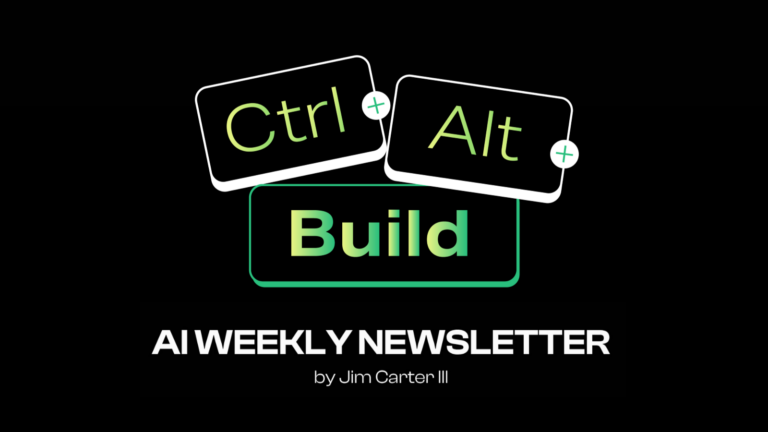01: Show Me The $CHAT

There’s a fiscal buzz in the investment world, and it’s all about $CHAT, a new ETF centered on generative artificial intelligence (AI). But this isn’t your typical AI – it’s a creator and original data generator.
A student turned inventor if you will.
Managed by Roundhill Investments, $CHAT debuted on May 18, 2023, and is now widely available and showing gains. But what’s within the fund?
- Platforms: These are your builders and trainers of AI tools.
- Infrastructure: The providers of the hardware that powers AI.
- Enterprise Software: The bridge connecting AI to businesses.
- Consumer Software: The conduit bringing AI into everyday life.
You’ll find industry titans like Microsoft, Alphabet, and Baidu, specialized AI firms like iFlyTek, and semiconductor leaders like Nvidia.
Why should we care? Let’s dive into the compelling numbers behind this.
The total addressable market for generative AI enterprise software is estimated at around $121 billion. Additionally, AI could drive approximately $7 trillion in global economic growth over the next decade. These figures aren’t just impressive – they represent the transformative potential of generative AI. After all, that’s why we’re advocates.
As we step into this new AI era, it’s crucial to do your due diligence when considering new investment opportunities like $CHAT. The future of AI isn’t merely about what unfolds – it’s about how we engage with it and where we position ourselves within its landscape.
The world of AI is evolving quickly, and funds like $CHAT give you another opportunity to invest in it.
I’ve added $CHAT to my Dollar Cost Averaging portfolio – is this something you’d start buying as well?
02: AI Streamlines Medical Records

AI has now officially arrived at the doctor’s office.
Carbon Health, a clinic chain, has launched a new tool that uses GPT-4 to create medical records. This tool is designed to help doctors focus more on their patients and less on paperwork. It’s like having an intelligent assistant who can handle all the administrative tasks, freeing doctors to do what they do best – taking care of patients.
Here’s how it works: The tool records and transcribes patient appointments, then combines this transcript with other information like lab results and doctor’s notes to generate a summary of the patient’s visit. The new tool also creates instructions for patient care and codes for diagnoses and billing. The generated medical chart can then be edited and finalized by healthcare providers.
All automated.
You might think, “That sounds great, but how efficient is it?”
According to Carbon Health, the tool takes less than four minutes to create a medical record. It is significantly faster than it can take a doctor to create a chart manually. This efficiency could allow clinics to see more patients without adding strain to the already busy schedules of physicians.
Now, I’m not a doctor, but this is a fantastic example of how AI can expand efficiency and enhance patient care in the medical field by mixing the human touch and expertise of the physician and letting AI do the manual back-office work.
Carbon Health is now looking to automate even more processes, like placing prescription and lab orders, scheduling follow-up appointments, and making referrals. Imagine a world where AI is integrated into every aspect of healthcare. The potential is wild!
AI will continue to play a crucial role in healthcare, helping doctors provide better care and making healthcare more accessible for everyone. This is one of the first big AI plays in the healthcare industry to automate and personalize unique cases at scale truly. It’s also emblematic of what’s possible with the early adoption of this tech into mainstream use cases.
03: AI Regulation & Your Business In Simple Terms

There have been a lot of advancements in the regulation and rights conversations with AI in the past week, and it’s been hard to keep up and make sense of. I spent some time collecting the most significant updates and summarizing them.
Let’s dive in.
The Biden-Harris Administration is making big moves in AI research, development, and deployment. They’ve put together a National AI R&D Strategic Plan 🔗, essentially a roadmap for federal investments in AI. The goal is to promote responsible innovation that puts people and the public good at the center.
But they’re not stopping there. They also ask for public input on managing AI risks and maximizing AI opportunities. So, if you’ve got thoughts on this, now’s your chance to share them.
You might wonder, “What about my rights when using AI?” They’re also considering this and have proposed an AI Bill of Rights 🔗, which outlines the rights you should expect when interacting with AI systems.
On the risk management front, the National Institute of Standards and Technology (NIST) has designed an AI Risk Management Framework 🔗. This is a set of practices to help organizations like yours manage the risks of using AI.
And let’s remember consumer protection. The Consumer Financial Protection Bureau (CFPB) 🔗 and other federal agencies are on the case, ensuring fairness, equality, and justice are upheld as AI becomes a more significant part of our lives.
Lastly, there’s a great piece by MIT Technology Review that outlines six different international attempts to regulate AI 🔗. It’s a great read if you want to understand the global landscape.
So, what does all this mean for you as a business owner and AI enthusiast?
It means more accountability for AI developers and businesses, which could lead to more responsible and ethical AI practices. It means guidelines to help you manage AI risks. It means building consumer trust in AI systems, which could increase their acceptance and adoption. And it means potential global standards for AI, which could make it easier for you to navigate the regulatory landscape.
These developments are about making AI safer, more reliable, and more beneficial for everyone. And that’s a future we can all get excited about.
While we may not agree on everything, these are steps towards a more understood world, avoiding David v. Goliath and protections for all of us who contribute to the data as well are consumers of it.
PS. Also, yes, today’s graphics were created by AI, Midjourney to be exact.
If you’re looking for a simple ‘getting started’ primer for ChatGPT, Midjourney and Adobe Firefly, I just released 🔗 a quick getting started tutorial + in depth 1hr video training that will help you generate incredible artwork like this.
